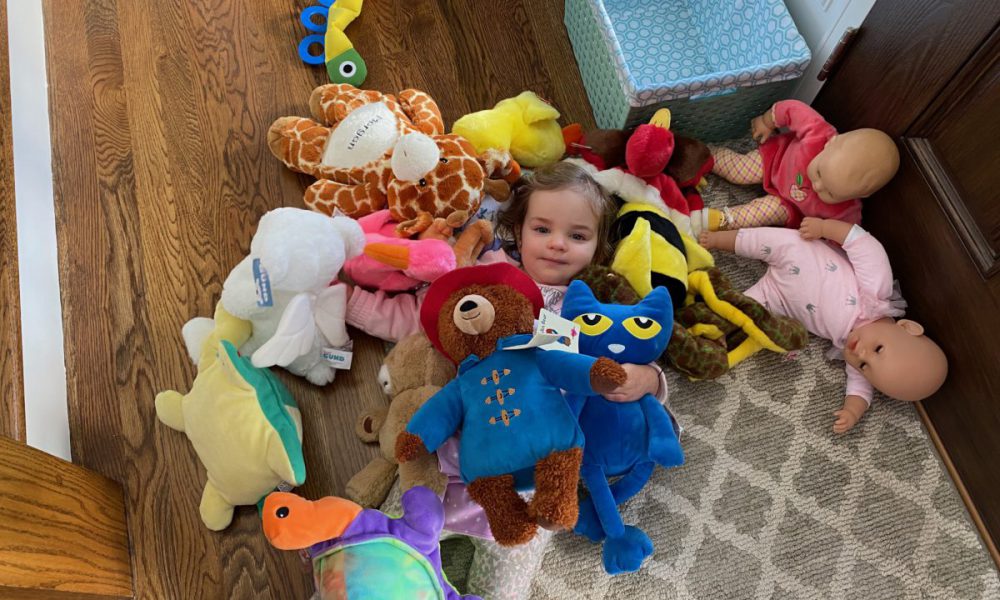DEVELOPMENTAL PLAY: Chapter 4
Helping your child learn and grow starts at a young age by interacting and playing with them. Follow along with Maddie to learn some fun playtime activities that you and your child can perform together!
*Please note the information described in the “What to expect” sections represent an average timeframe of when specific gross motor skills are achieved. Every baby is different and will have a different developmental timeframe. Please use this as a guideline for your baby’s developmental skills and a way to help encourage skills through fun playtime activities. Always reach out to your pediatrician if you have any specific concerns about your baby’s development.
10-12 Months Old
What to expect:
- Baby will initiate reciprocal crawling (opposite arm/legs moves together) and their belly is no longer touching the floor.
- Baby won’t spend much time on their belly or back. They may just use these positions for transitions to get to a sitting position. You now have a moving baby!
- Baby will continue to demonstrate a variety of sitting positions (ring sitting, side sitting, sitting with 1 leg bent and one leg straight, sitting with both legs out straight, sitting on a bench/stool, and playing in a deep squat position).
- Baby will being transitioning from sitting to side sitting to hands and knees when attempting to crawl towards toys/people.
- Baby will reach up to elevated play surfaces and pull themselves up to stand using their legs to power themselves up at around 10 months. At around 11-12 months, baby will begin to transition from sitting to standing through a 1/2 kneel transition. Also around 12+ months, baby may attempt to transition to stand without use of their arms on a support surface. They will attempt to stand from hands and knees position, to downward dog stance, to squat, to stand attempt, to pull to stand.
- Baby will gain improved control and strength of their legs when transitioning from standing down to the floor as they can complete a nice controlled squat rather than “plopping” to the ground.
- Baby is able to crusie (initiate side steps) while their hands are supported on an elevated surface as the couch, coffee table, or activity table.
- Baby is able to crawl forward up stairs and crawl backwards down the stairs (feet landing and with their tummy against the steps for safety).
- Baby may begin to walk forward with their hand held between 10-11 months of age. They may begin to walk independently around 12-15 montsh of age.
How to play with your 10-12 month old baby
Variety of sitting positions
Ring Sitting (heels together/towards each other)
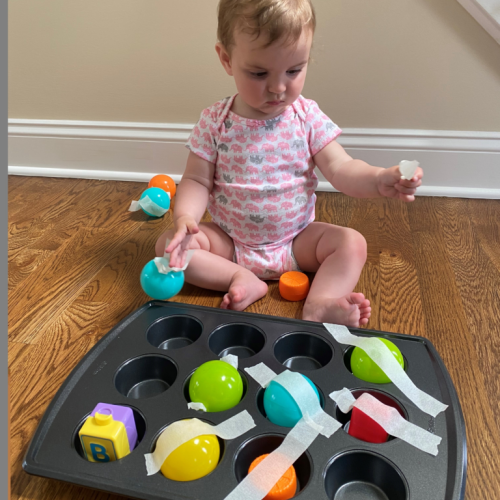
Side Sitting (one leg bent inward and one leg bent outward)
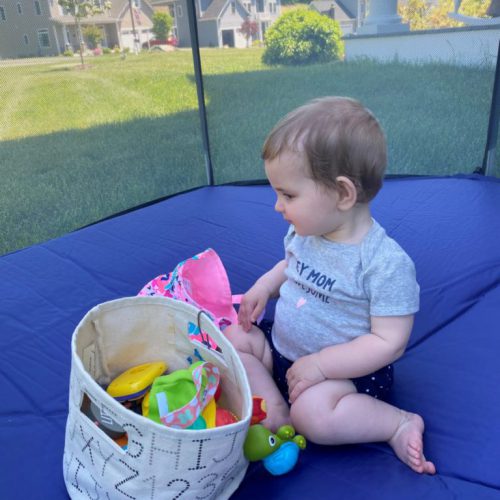
Modified Long Sitting (One leg bent inward and one leg bent outward)
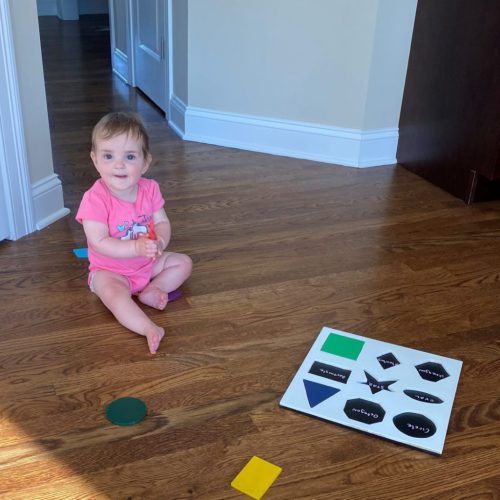
Long Sitting (both legs out straight)
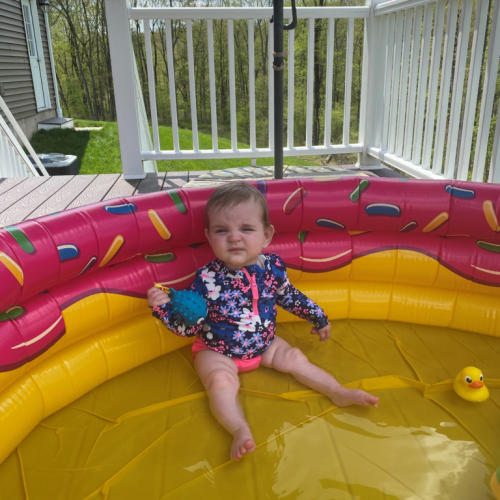
Short Sitting
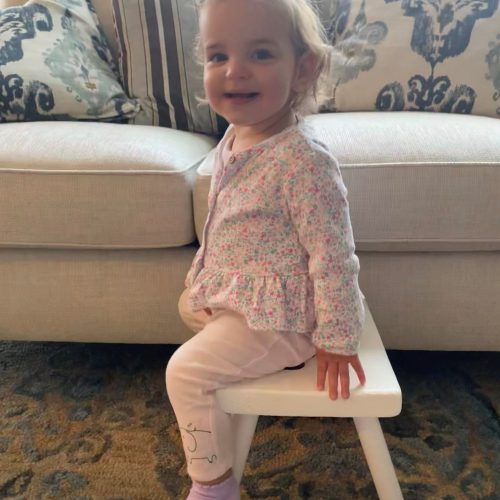
Full Squat to Play
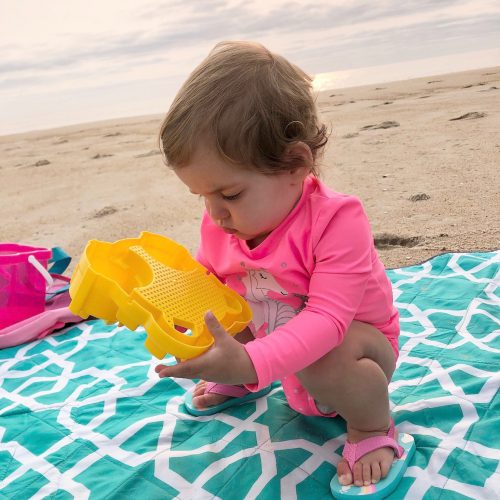
Reciprocal hands and knees crawling
Once baby is crawling on their hands and knees, you can start to challenge their strength and balance by having them crawl on and off a couch cushion, pillow, small step, or a folded blanket, mat, or towel. This will help to strengthen their arms as they have to pull themselves onto the surface. It will also help further strengthen their legs and achieve the proper reciprocal leg pattern that is needed for crawling and walking.
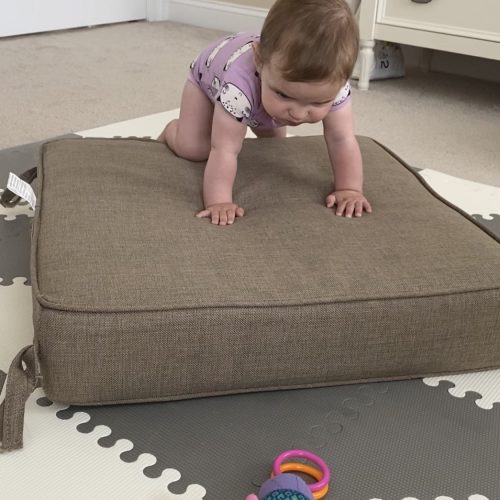
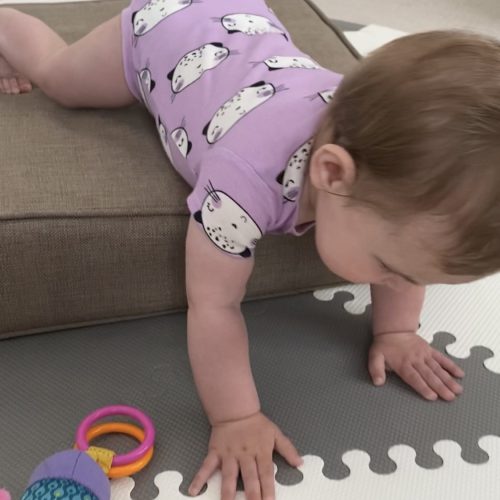
Crawling through tunnel/under surfaces
Make crawling a fun new exploratory game by having baby crawl through a tunnel, stacked pillows or even under a raised surface.
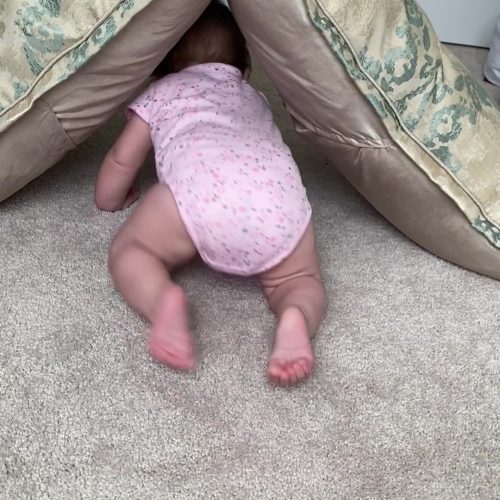
Crawling over different textured surfaces (grass, carpet, hardwood floor, tile)
Once baby is crawling, challenge their crawling skills by having them move across a variety of surfaces. Hardwood floor/tile flooring would be the easiest surface to have baby start crawling on, followed by carpet, and then grass. Grass or a soft moldable surface (i.e. mat surface) is harder for baby to crawl across because it challenges their balance and they have to work harder if their hands and knees slightly “sink” into the surface.
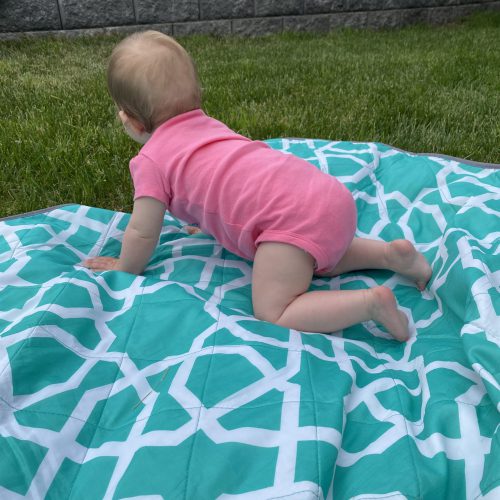
- Placing a blanket over the grass challenges baby’s balance as they try and crawl across the blanket with all the “bumps” along their path.
- Crawling on the grass without a blanket is great sensory play for baby. This is a different texture for baby to experience and attempt to crawl through. Start slow as your baby might not love this new feeling, but give them plenty of opportunities to trial this texture and new feeling!
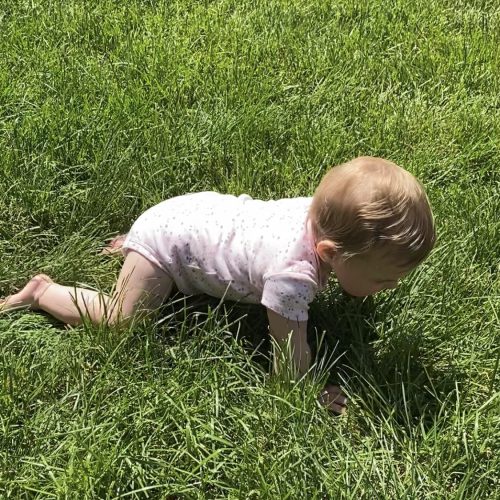
Crawling up stairs (or onto couch cushions if there are no stairs in the house)
Once baby has mastered crawling and is crawling over different surfaces, they can practice crawling up the stairs. If there are no stairs in the home, you can continue to practice crawling up/down raised surfaces such as a couch cushion. You could place the couch cushion on the floor up against the couch and have baby crawl from the floor up to the couch cushion and then up onto the couch itself to mimic going up the stairs.
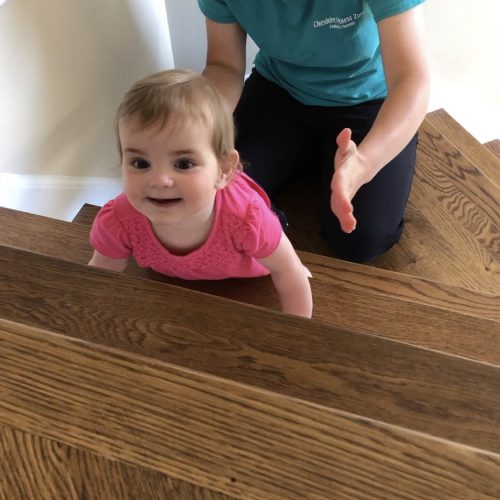
Crawling backwards down stairs (or off of couch cushion if there are no stairs in the home)
When practicing going down the stairs, you want to teach baby to crawl down the stairs backwards for safety. Baby will essentially be on their belly and lead with their feet. Start out by having baby practice crawling backward off of a couch cushion or off of the bottom stair step. Once they have the concept of going down backwards, then you can try to do more stairs. Always stay behind baby and help control their speed as needed when they are coming down the stairs for safety.
Pull to stands or 1/2 kneel to stands
Place toys on an elevated surface (i.e. coffee table, activity table, storage bin, diaper box) so that it encourages baby to pull up to a standing position. Baby should initiate transition with one leg on the floor so that they are in a 1/2 kneeling position and then use their arms to help pull themselves into standing.
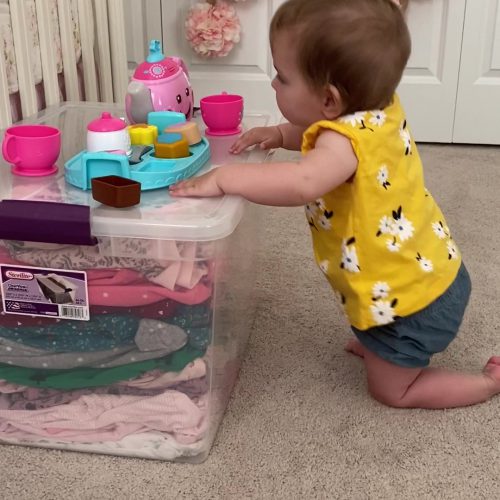
Cruising
Practice cruising at various surfaces within your home and place toys to the right and left so that baby can practice taking side steps. Some great surfaces to practice cruising at can be the bathtub, couch (may need to remove the couch cushions if too high for baby’s hands to rest on), playpen gate, coffee table, activity table, ottoman, and laundry basket.
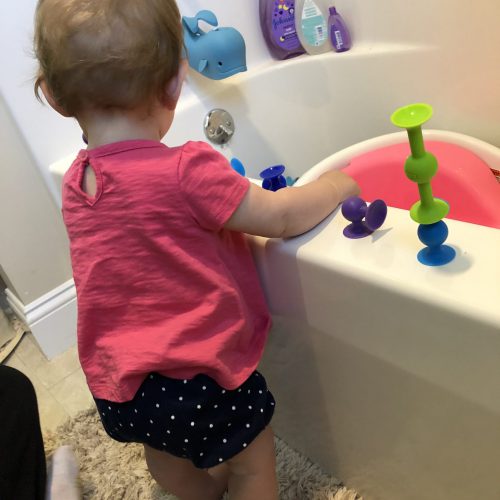
Cruising to different surfaces
Once your baby is able to cruise independently to the left and right while holding onto a surface with their hands, it is time to challenge their leg strength and balance. A fun way to do this is to encourage baby to move between two different surfaces. The surfaces can be different objects within your home (play cube, ottoman, coffee table, push walker, kid chairs, stool). At first, you can set the two surfaces at a 90 degree angle so that baby cruises in an “L” shape pattern. Once baby gets good at this, you can move the surfaces apart from each other so that baby has to take a small side step and then reach with their arms to the next surface. As you practice this skill, move the 2 objects further apart from each other so that soon baby can practice initiating an independent step before placing their hands down on the next surface.
Standing Balance
Practice standing with baby in front of a surface where they can place their hand on top for some support. Some surfaces that work well for this activity could be a low window, ottoman, coffee table, play cube, activity table top toy, sliding glass door. If you are at a vertical surface such as a window, fridge, or sliding glass door, you can use suction cup toys, magnets on the fridge, or painter’s tape to secure figurines to this surface. These activities will keep their visual attention longer and encourage them to reach with one hand an maintain their balance with the opposite hand.
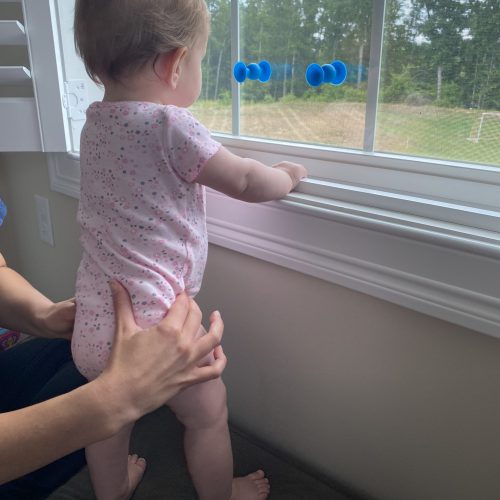
Once baby is standing on their own with both of their hands supported, you can challenge their balance by giving them a toy in one hand to see if they can maintain their standing balance with the opposite arm on a support surface.
One hand on surface and one hand off:
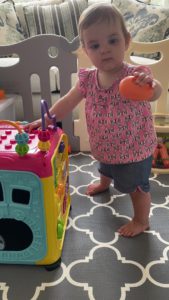
Once baby can stand with just the support of one hand on a surface, you can challenge their balance to see if they can squat to retrieve a toy from the floor and come back to standing.
Start by having them squat down with their one hand on a support surface and place the toy on top of a bin/basket so that they don’t have to squat all the way down to the floor to get the toy. As they get good at this, then you can move the toy down to the floor.
Once they mastered the squat while holding onto a support surface with one hand, you can encourage baby to squat down for toys without arm support. Again, start this task by placing a toy on top of a bin/basket so they they don’t have to squat all the way down to the floor until they seem ready for this task.
Squats to retrieve items off of floor with one hand on support surface:
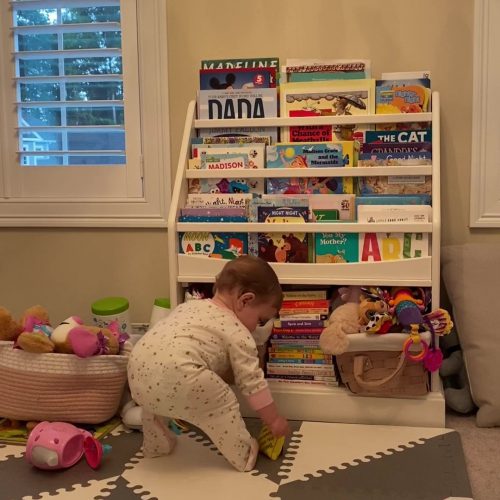
Sit to Stands
This is a great activity to strengthen baby’s legs and prepare them for independent standing and walking. You can set up this activity by having babay sit on a couch cushion, small chair, or step stool and practice pulling up to a low surface such as a storage bin, coffee table, ottoman, or play cube/activity table. In order to allow baby to be successful, position them in sitting close to the surface that they will pull up to. As baby gets more comfortable with standing, you can move the surface that they are sitting on further away from the toy so that they practice getting into standing without the support of their hands.
Floor to Stands
Once baby is pulling to stand with the use of their hands on various surfaces, you can start having them practice transitioning from the floor to standing without the need for their hands on a support surface, just the floor. Start by having them practice transitioning from a low surface (step stool, diaper box, basket) and then see if they will try and stand up with just their hands on the floor. You will see them move from a “downward dog position” or a deep squat position and they they will push up into standing.
Standing without assistance
In order to give your baby some extra confidence with standing balance, try putting an object in each of their hands. This will provide them with some distraction while they work hard on maintaining their balance. It will also help their arms go out to the side to aide with stability.
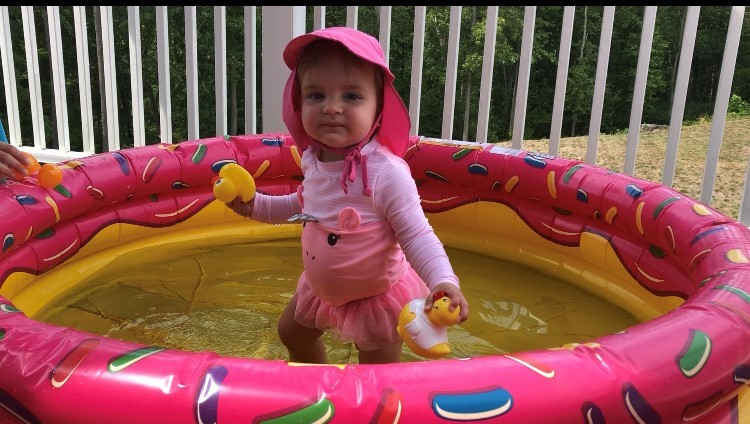
Walking with support of toys (push walker) or objects (i.e. hula hoop)
Once baby is standing well on their own, try having them practice walking with use of a push walker. Once they are able to move all around the room while pushing their walker, try to lessen their support by having them hold onto one end of an object while you hold on to the other end (i.e. hula hoop, ring, stuffed animal). They will still have the feeling of support and will want to initiate steps, but the support is less so they are building up their strength to prepare for independent walking.
Walking forward short distances from one external surface to the next
It’s time to encourage some independent steps! The best way to do this is to set up their play environment for success. Once they are good at cruising all around a variety of surfaces, start to move surfaces slightly apart from one another so that they are encouraged to take a side or even better forward step to the next surface. Once they are confident and strong enough to take 1 or 2 forward steps to the next surface, slowly move the two surfaces (i.e. 2 chairs, storage bin, coffee table, play cube) further away from one another so that they have to initiate greater independent steps. Go slow with this so that baby does not become frustrated or disinterested. Give them lots of opportunities and practice with this skill and use motivating toys to spark their interest to move to the next surface.
Walking on different surfaces
Once baby is fully walking independently, it is time to challenge their balance by having them walk across a variety of surfaces such as hardwood floor, carpet, play mat, grass, leaves, and sand. These different surfaces make baby utilize their trunk and extremity strength to maintain adequate balance, helping them get stronger at being an independent walker.
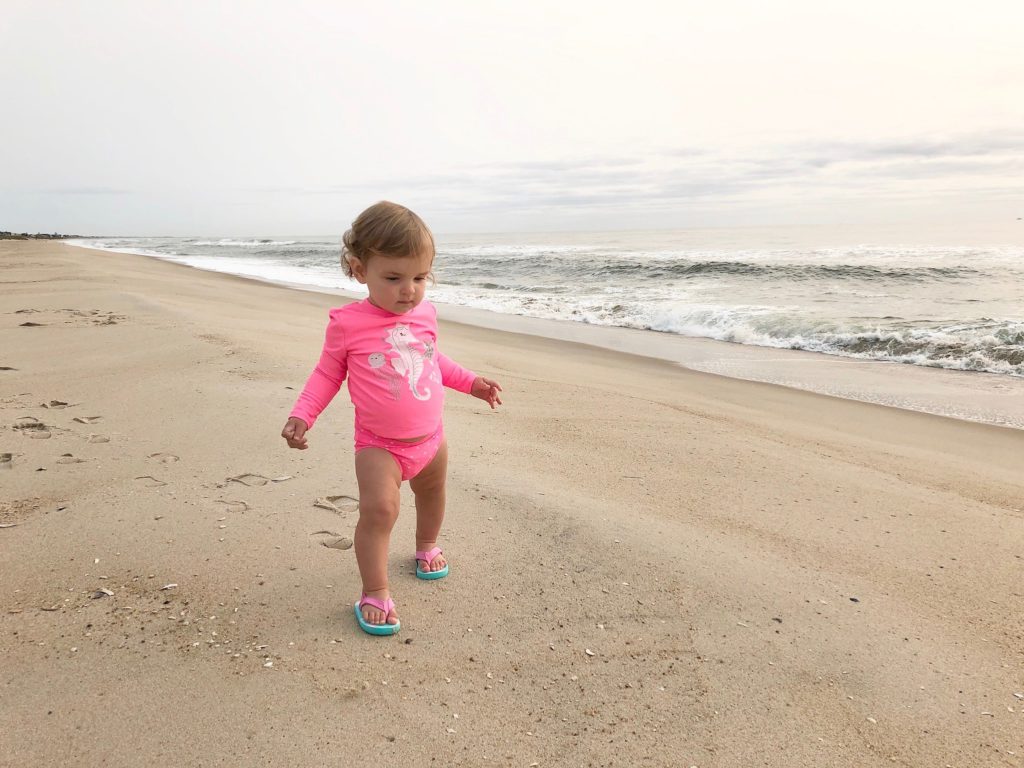
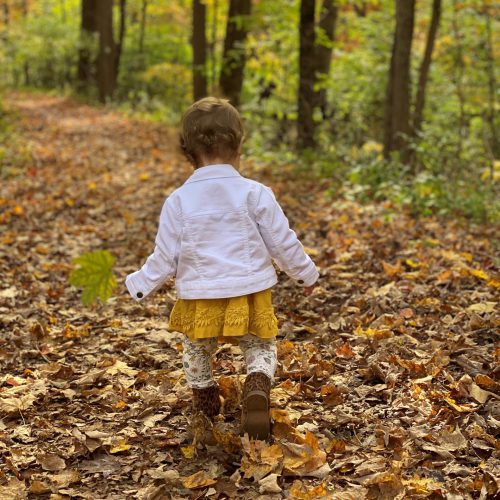
Stepping over Obstacles
This activity is a great way to further challenge baby’s balance when walking. It also helps to strengthen their lower extremities as they are practicing being in a single limb stance position as they step over the obstacle within their path. Some simple obstacles that can be used are hula hoops and a rolled towel/blanket. Place the object within baby’s walking path in order to have the practice stepping over it. At first, give baby your hand for assistance so that they understand the task and then allow them to try on their own.
Walking and Kicking Ball
This is another great way to challenge baby’s balance when walking. In order to kick a ball forward, baby has to stand on one foot independently for a few seconds which is a difficult skill to perform at this age. When introducing this task, show baby what you want them to do by demonstrating the task first and then try and help them with the task by holding their hand. It is also helpful if the ball is stationary (not rolling) and baby is able to just walk up to the ball to try and kick it forward.
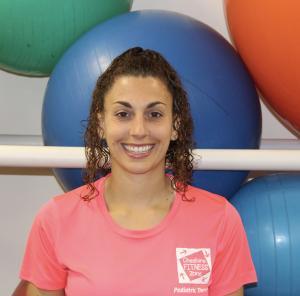
Amanda Morgan
Amanda attended Sacred Heart University and has been with Cheshire Fitness Zone since the beginning of her career as a Physical Therapist in 2012. She specializes in Aquatic Therapy, Constraint-Induced Movement Therapy and is a Children’s Yoga Instructor. In her spare time, she enjoys spending time with her family and friends, traveling, hiking, bike riding, going to the beach, teaching graduate students at Sacred Heart and cheering for the Patriots!
Amanda is the author of this exerpt with the help of her daughter, Maddie.

